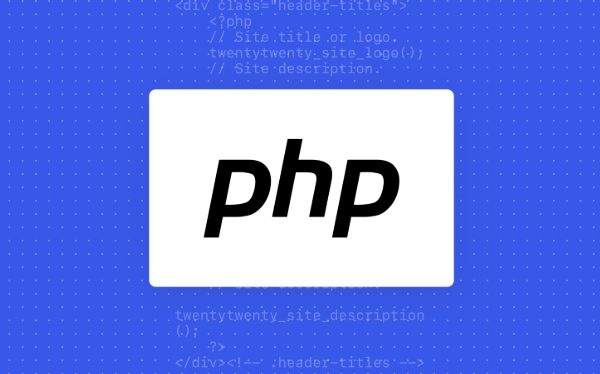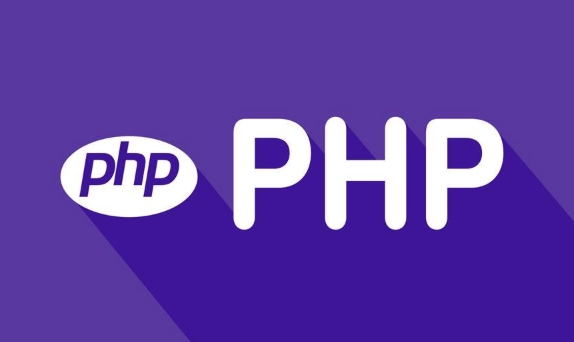There are three main choices for PHP frameworks suitable for use with React: 1. Laravel is the mainstream first choice, suitable for new projects, providing strong routing, Eloquent ORM, out-of-the-box functions and good ecology, and high development efficiency; 2. Symfony is suitable for large or existing systems integration, with high modularity, strong standardization, and suitable for long-term maintenance; 3. Lumen/Slim is a lightweight framework suitable for small projects or resource-constrained environments, with fast startup, less occupancy, but requires more infrastructure to be handled by yourself. Selection should be comprehensively considered based on project scale, team experience and architectural needs.

If you are looking for a PHP framework suitable for use with React, there are actually two core points: API development is friendly, clear structure, and easy to maintain . As the front-end framework, React is responsible for interface interaction, while the PHP back-end mainly assumes the role of data interface and business logic processing. Therefore, when choosing a framework, the focus should be on whether its API support is perfect, how effective it is in development, and whether the ecosystem is active.

The following is analyzing which PHP frameworks are more suitable for use with React from several dimensions encountered in actual development:

Laravel: The most mainstream choice
Laravel is one of the most popular PHP frameworks at present. It is very suitable for building RESTful APIs and is also a commonly used backend partner for React front-end.
-
Distinctive advantages :

- It comes with a powerful routing system, which makes the writing interface very convenient
- Eloquent ORM is simple and easy to use, and the database operation is easy
- Provides out-of-the-box authentication mechanism, queue, cache and other common functions
- Active community, complete documentation, easy to find answers when encountering problems
-
Excellent development experience :
- Artisan command line tool can quickly generate controllers, models, migration files, etc.
- Token authentication can be quickly implemented with Passport or Sanctum
- Using the Resource controller can unify the output format, making it easier to call React
If you are working on a new project and want to get started quickly, Laravel is almost the first choice. Especially when you need a stable and scalable backend to support React.
Symfony: Suitable for large projects or existing system integration
Symfony is more inclined to enterprise-level applications. It is not as "one-stop" as Laravel, but it is more flexible and highly modular.
-
Applicable scenarios :
- The existing Symfony project wants to introduce React
- Projects that require high performance requirements and require fine control of components
- The team has some experience and does not want to be "kidnapped" by the framework
-
Advantages include :
- Strong standards and specifications, suitable for long-term maintenance
- Components can be pluggable and can be freely combined according to requirements
- FOSRestBundle NelmioApiDocBundle is great for building API documentation and routing management
Although the learning curve is slightly steeper than Laravel, it is also a good choice if the project is larger, or if you are used to Symfony's workflow.
Lumen/Slim: Lightweight API framework
If you only need a lightweight backend to work with React and don't want too heavy frameworks, Lumen (Laravel's microframework) or Slim is a good choice.
-
Suitable for scenarios :
- Small project or MVP (minimum viability product)
- A performance-sensitive and resource-limited environment
- There is a front-end architecture, only simple interface support is required
-
Features :
- Start faster and take up less resources
- Don't have too many functions built in, you need to build the basic structure yourself
- Suitable for developers who understand PHP and want to maintain a streamlined structure
Although this type of framework is highly flexible, it also means that you have to deal with many details yourself, such as middleware, error handling, authentication, etc. If your team is not very staffed and pursues development efficiency, it may be more suitable for Laravel.
Practical matching suggestions
No matter which framework you choose, the key to matching it with React lies in the design idea of ??separation of front and back ends:
- The backend only provides JSON interface and does not perform page rendering.
- The front-end requests data through fetch/axios to perform state management
- The CORS setting must be correct to ensure that there are no cross-domain problems in local debugging
- Interface paths are recommended to add
/apiprefixes to facilitate management and proxy configuration.
In addition, you can also consider placing the static files built by React in the public directory of the PHP project and serving them externally with the same domain name, which avoids the hassle of deploying multiple services.
Overall, Laravel is the first choice for most people because it takes into account both feature richness and development efficiency; if the project is larger or already has a Symfony foundation, you can use Symfony; while for lightweight projects, Lumen or Slim can be considered.
Basically all is it, which depends on the project type and team familiarity.
The above is the detailed content of best php framework to use with react. For more information, please follow other related articles on the PHP Chinese website!

Hot AI Tools

Undress AI Tool
Undress images for free

Undresser.AI Undress
AI-powered app for creating realistic nude photos

AI Clothes Remover
Online AI tool for removing clothes from photos.

Clothoff.io
AI clothes remover

Video Face Swap
Swap faces in any video effortlessly with our completely free AI face swap tool!

Hot Article

Hot Tools

Notepad++7.3.1
Easy-to-use and free code editor

SublimeText3 Chinese version
Chinese version, very easy to use

Zend Studio 13.0.1
Powerful PHP integrated development environment

Dreamweaver CS6
Visual web development tools

SublimeText3 Mac version
God-level code editing software (SublimeText3)
 PHP Variable Scope Explained
Jul 17, 2025 am 04:16 AM
PHP Variable Scope Explained
Jul 17, 2025 am 04:16 AM
Common problems and solutions for PHP variable scope include: 1. The global variable cannot be accessed within the function, and it needs to be passed in using the global keyword or parameter; 2. The static variable is declared with static, and it is only initialized once and the value is maintained between multiple calls; 3. Hyperglobal variables such as $_GET and $_POST can be used directly in any scope, but you need to pay attention to safe filtering; 4. Anonymous functions need to introduce parent scope variables through the use keyword, and when modifying external variables, you need to pass a reference. Mastering these rules can help avoid errors and improve code stability.
 How to handle File Uploads securely in PHP?
Jul 08, 2025 am 02:37 AM
How to handle File Uploads securely in PHP?
Jul 08, 2025 am 02:37 AM
To safely handle PHP file uploads, you need to verify the source and type, control the file name and path, set server restrictions, and process media files twice. 1. Verify the upload source to prevent CSRF through token and detect the real MIME type through finfo_file using whitelist control; 2. Rename the file to a random string and determine the extension to store it in a non-Web directory according to the detection type; 3. PHP configuration limits the upload size and temporary directory Nginx/Apache prohibits access to the upload directory; 4. The GD library resaves the pictures to clear potential malicious data.
 Commenting Out Code in PHP
Jul 18, 2025 am 04:57 AM
Commenting Out Code in PHP
Jul 18, 2025 am 04:57 AM
There are three common methods for PHP comment code: 1. Use // or # to block one line of code, and it is recommended to use //; 2. Use /.../ to wrap code blocks with multiple lines, which cannot be nested but can be crossed; 3. Combination skills comments such as using /if(){}/ to control logic blocks, or to improve efficiency with editor shortcut keys, you should pay attention to closing symbols and avoid nesting when using them.
 How Do Generators Work in PHP?
Jul 11, 2025 am 03:12 AM
How Do Generators Work in PHP?
Jul 11, 2025 am 03:12 AM
AgeneratorinPHPisamemory-efficientwaytoiterateoverlargedatasetsbyyieldingvaluesoneatatimeinsteadofreturningthemallatonce.1.Generatorsusetheyieldkeywordtoproducevaluesondemand,reducingmemoryusage.2.Theyareusefulforhandlingbigloops,readinglargefiles,or
 Tips for Writing PHP Comments
Jul 18, 2025 am 04:51 AM
Tips for Writing PHP Comments
Jul 18, 2025 am 04:51 AM
The key to writing PHP comments is to clarify the purpose and specifications. Comments should explain "why" rather than "what was done", avoiding redundancy or too simplicity. 1. Use a unified format, such as docblock (/*/) for class and method descriptions to improve readability and tool compatibility; 2. Emphasize the reasons behind the logic, such as why JS jumps need to be output manually; 3. Add an overview description before complex code, describe the process in steps, and help understand the overall idea; 4. Use TODO and FIXME rationally to mark to-do items and problems to facilitate subsequent tracking and collaboration. Good annotations can reduce communication costs and improve code maintenance efficiency.
 Quick PHP Installation Tutorial
Jul 18, 2025 am 04:52 AM
Quick PHP Installation Tutorial
Jul 18, 2025 am 04:52 AM
ToinstallPHPquickly,useXAMPPonWindowsorHomebrewonmacOS.1.OnWindows,downloadandinstallXAMPP,selectcomponents,startApache,andplacefilesinhtdocs.2.Alternatively,manuallyinstallPHPfromphp.netandsetupaserverlikeApache.3.OnmacOS,installHomebrew,thenrun'bre
 How to access a character in a string by index in PHP
Jul 12, 2025 am 03:15 AM
How to access a character in a string by index in PHP
Jul 12, 2025 am 03:15 AM
In PHP, you can use square brackets or curly braces to obtain string specific index characters, but square brackets are recommended; the index starts from 0, and the access outside the range returns a null value and cannot be assigned a value; mb_substr is required to handle multi-byte characters. For example: $str="hello";echo$str[0]; output h; and Chinese characters such as mb_substr($str,1,1) need to obtain the correct result; in actual applications, the length of the string should be checked before looping, dynamic strings need to be verified for validity, and multilingual projects recommend using multi-byte security functions uniformly.
 Learning PHP: A Beginner's Guide
Jul 18, 2025 am 04:54 AM
Learning PHP: A Beginner's Guide
Jul 18, 2025 am 04:54 AM
TolearnPHPeffectively,startbysettingupalocalserverenvironmentusingtoolslikeXAMPPandacodeeditorlikeVSCode.1)InstallXAMPPforApache,MySQL,andPHP.2)Useacodeeditorforsyntaxsupport.3)TestyoursetupwithasimplePHPfile.Next,learnPHPbasicsincludingvariables,ech







